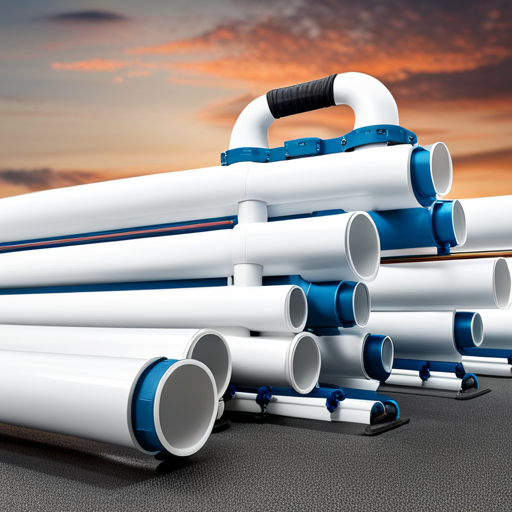2nd Jan 2024
Can You Use PVC Fittings with CPVC Pipe?

Introduction
When it comes to plumbing systems, it's essential to ensure that the materials used are compatible and capable of sustaining the desired flow and pressure. Two commonly used types of pipes in residential and commercial plumbing are PVC (Polyvinyl Chloride) and CPVC (Chlorinated Polyvinyl Chloride). Although they may appear similar, there are important differences between them, including their varying applications and compatibility with fittings. In this article, we'll explore whether it is possible to use PVC fittings with CPVC pipes.
Understanding PVC and CPVC
Before delving into the compatibility of PVC fittings with CPVC pipes, let's briefly differentiate between these two materials.
PVC pipes are widely used for drainage systems, venting, and cold water applications. They are known for their durability, affordability, and ease of installation. PVC pipes can handle a maximum temperature of 140°F (60°C) and are typically rated for non-pressurized systems.
On the other hand, CPVC pipes are specifically designed to withstand higher temperatures and pressures. They are often used for hot water applications, including residential and commercial plumbing systems. CPVC pipes have a maximum temperature rating of 200°F (93°C) and can handle higher pressures than PVC pipes.
Compatibility of PVC Fittings with CPVC Pipes
While PVC and CPVC pipes are similar in appearance, their fittings are not universally compatible due to differences in dimensions and tolerances. PVC fittings have thicker walls than CPVC fittings, resulting in variations in size and compatibility.
In general, it is not recommended to interchange PVC and CPVC fittings due to potential leaks and compromised joint strength. Using PVC fittings with CPVC pipes can result in an incorrect fit and may lead to leaks or even complete system failure over time. Therefore, it is crucial to adhere to the manufacturer's guidelines for the specific type of pipe being used.
Proper Fittings for CPVC Pipes
To ensure a safe and efficient plumbing system with CPVC pipes, it is crucial to use fittings specifically designed for CPVC materials. These fittings are designed to accommodate the thinner walls of CPVC pipes, ensuring a secure and leak-free joint.
CPVC fittings come with specifications and markings indicating their suitability for use with CPVC pipes. They are typically made from a higher grade of plastic that can withstand the higher temperatures and pressures associated with CPVC applications.
Conclusion
Knowing the differences between PVC and CPVC pipes is crucial for maintaining the integrity and efficiency of plumbing systems. While both materials have their specific applications, PVC fittings should not be used interchangeably with CPVC pipes. Using the proper CPVC fittings is essential to ensure seamless joint connections and prevent potential leaks or system failures.
Ultimately, always consult the manufacturer's guidelines and recommendations when working with PVC or CPVC plumbing systems to ensure compatibility, maintain safety, and achieve the desired results.
